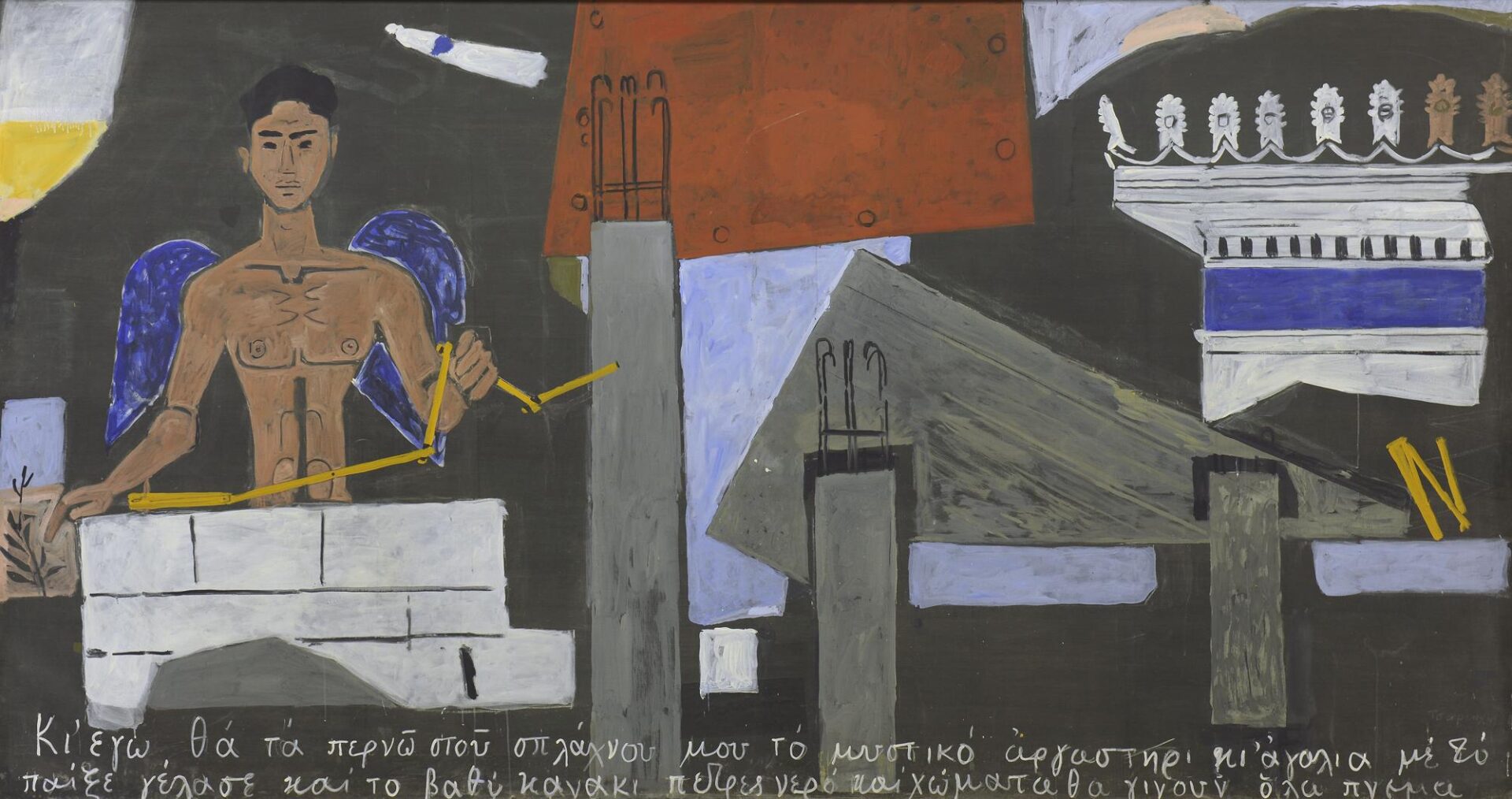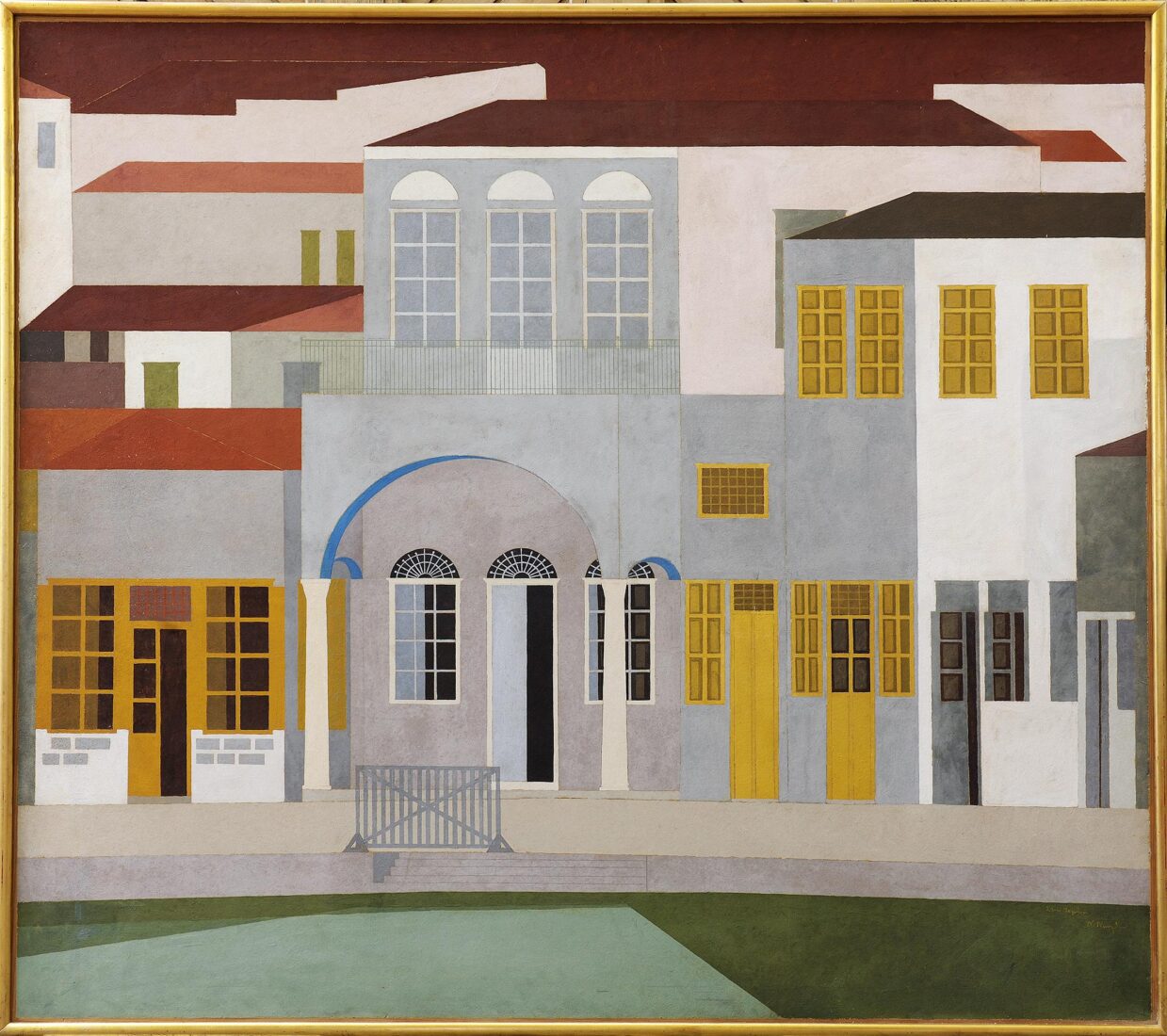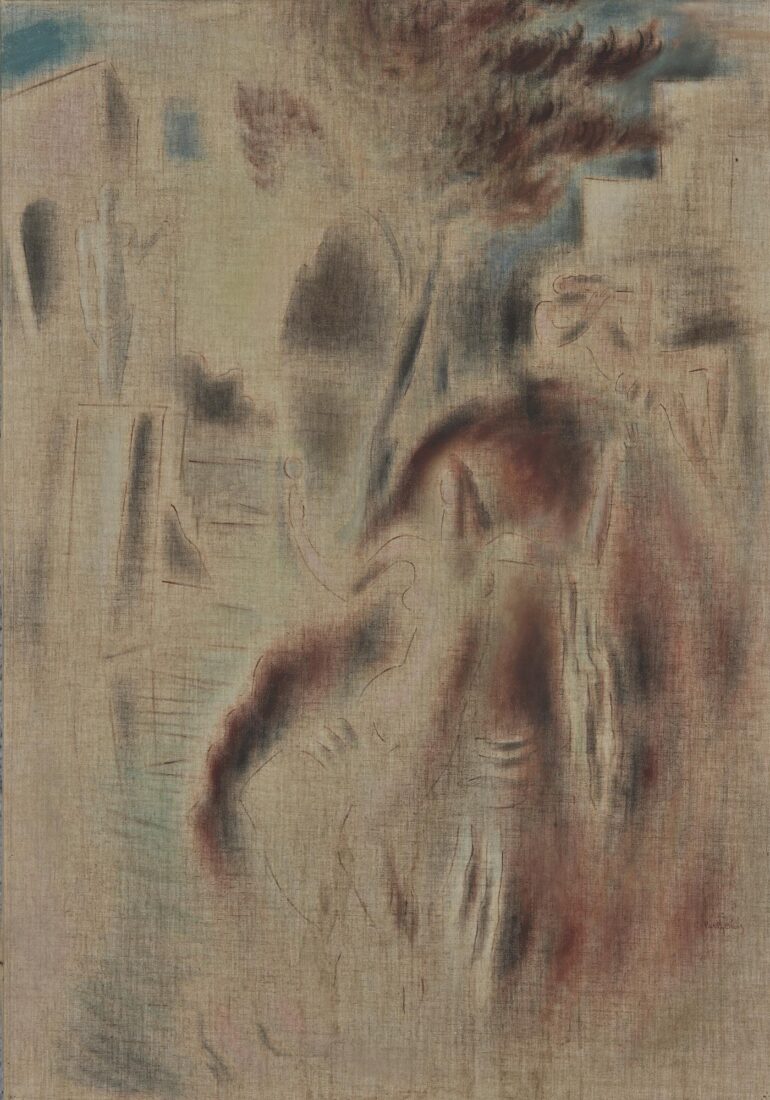

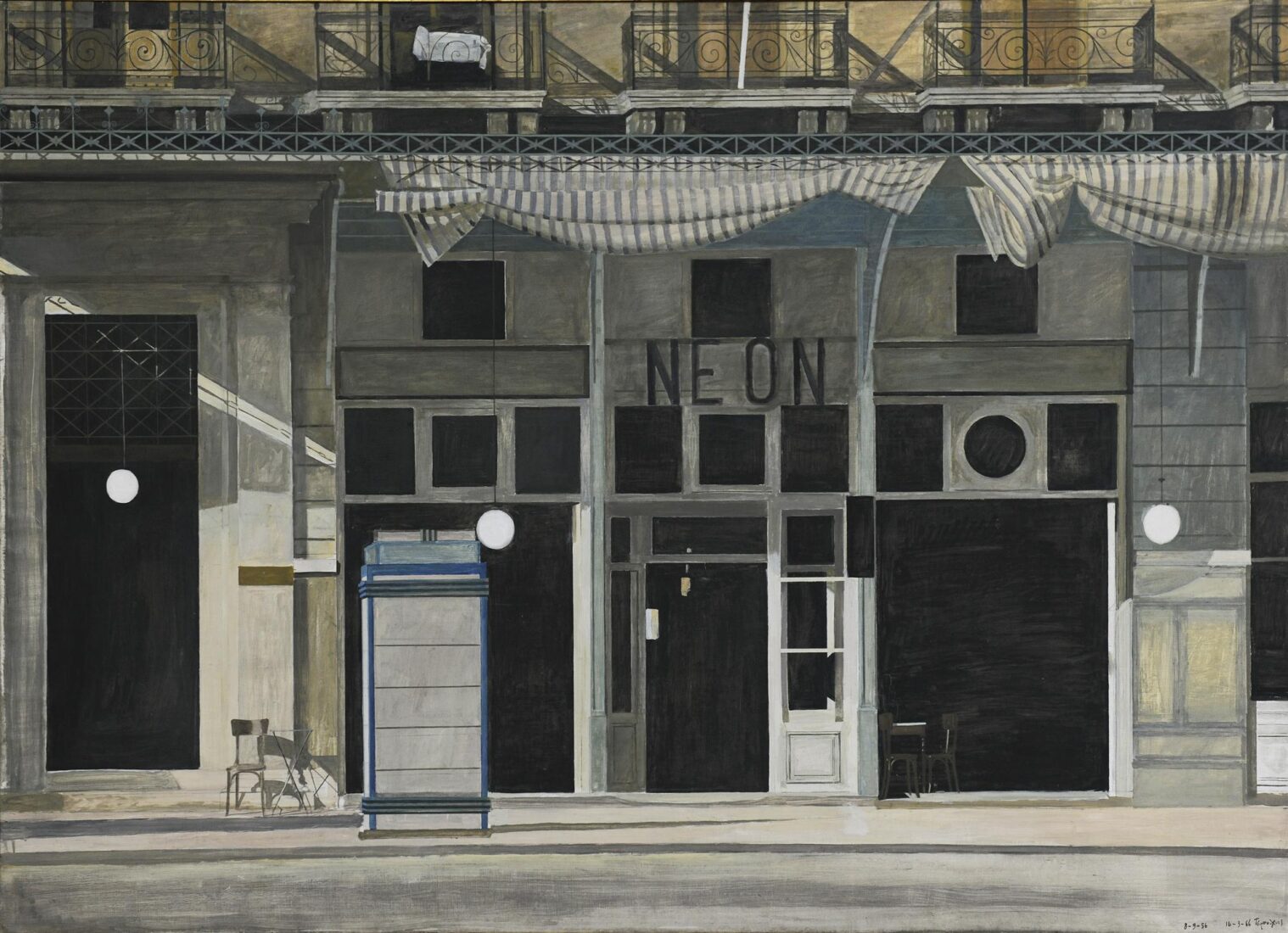
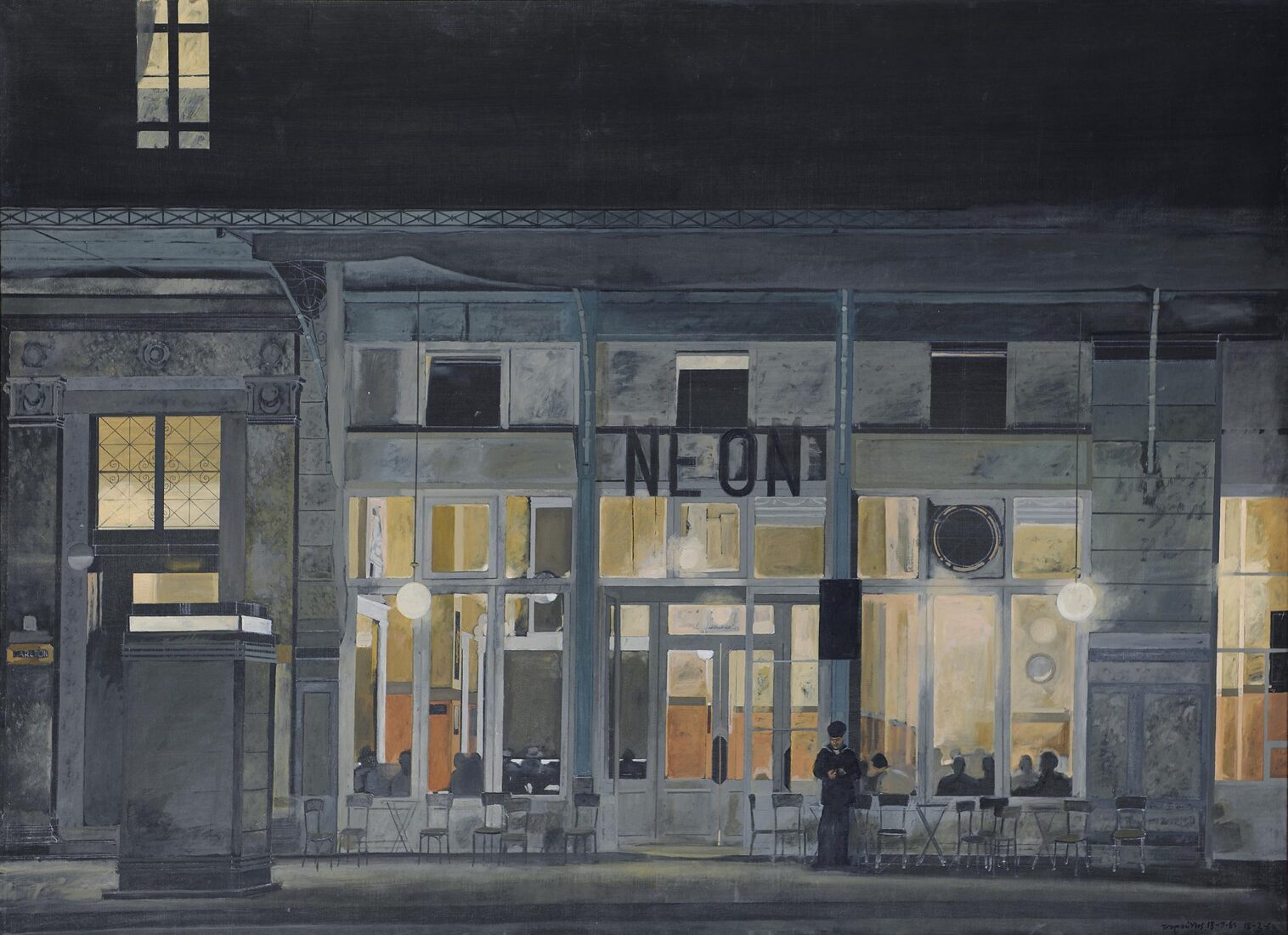
The subject of this diptych by Yannis Tsarouchis is the Neon Cafe as it was in 1956-1966 and still exists in Omonia Square. A daytime version preceded the nighttime view, which is interpreted here. In both compositions Tsarouchis depicts his subject, the facade of the cafe, frontally, eschewing perspectival illusion. The coffeehouse in Omonia Square was an emblematic theme for Tsarouchis, being the place frequented by the painter’s heroes – sailors and working-class youths. The coffeehouse was the stage upon which unfolded the everyday events that charmed this characteristic representative of the Thirties Generation. There are, however, other elements that Tsarouchis wished to call attention to in this theme: the architectural design of the cafe’s facade with its play of rectangular openings, doors and windows creates a grid pattern evocative of Mondrian, the innovator of geometric abstraction. Tsarouchis created an exciting play between abstraction and realism, between modernism and tradition.
The nighttime coffeehouse has the additional factor of artificial lighting, the white, yellow and orange lights that animate the painting’s generally black and grey palette. Here, the cafe’s patrons, a handful of small dark silhouettes, have become a secondary theme. In the daytime version they are absent entirely. Painted with classical austerity, Tsarouchis’ two cafes are his most abstract, modern and suggestive works.
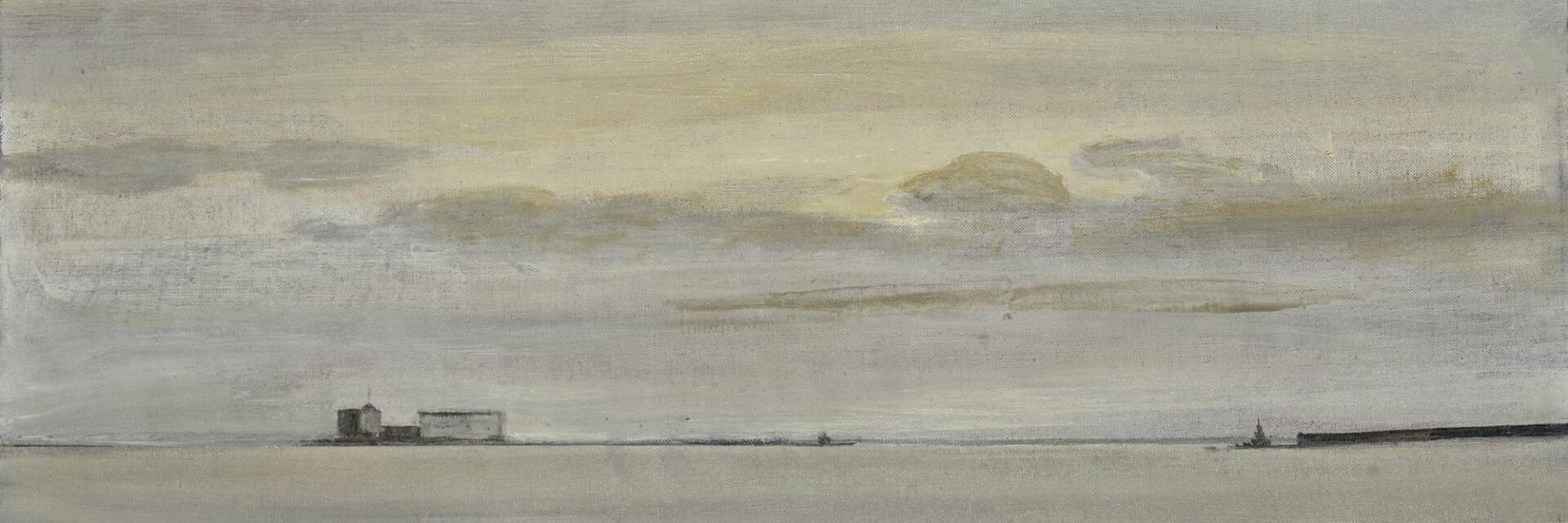
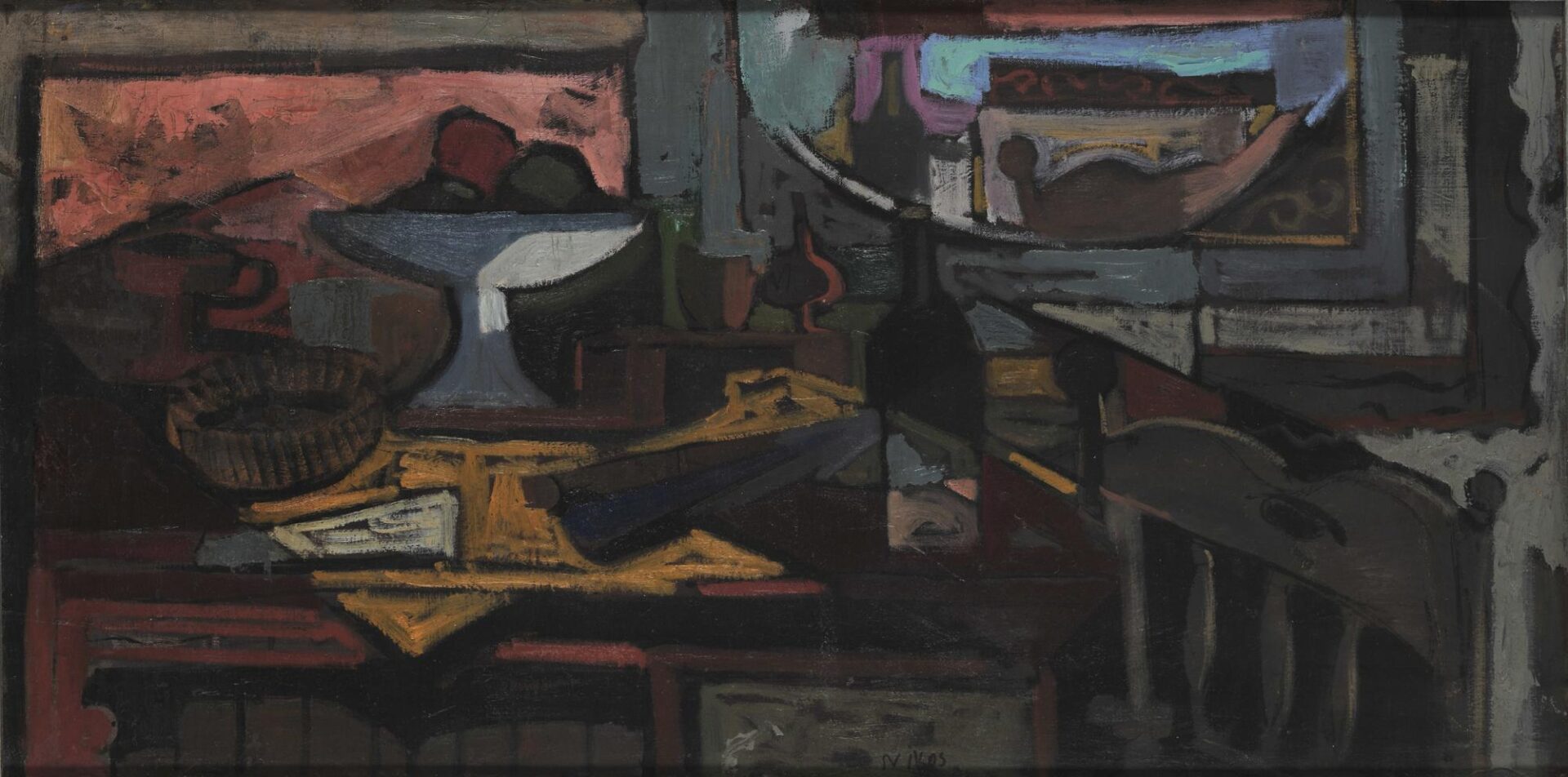
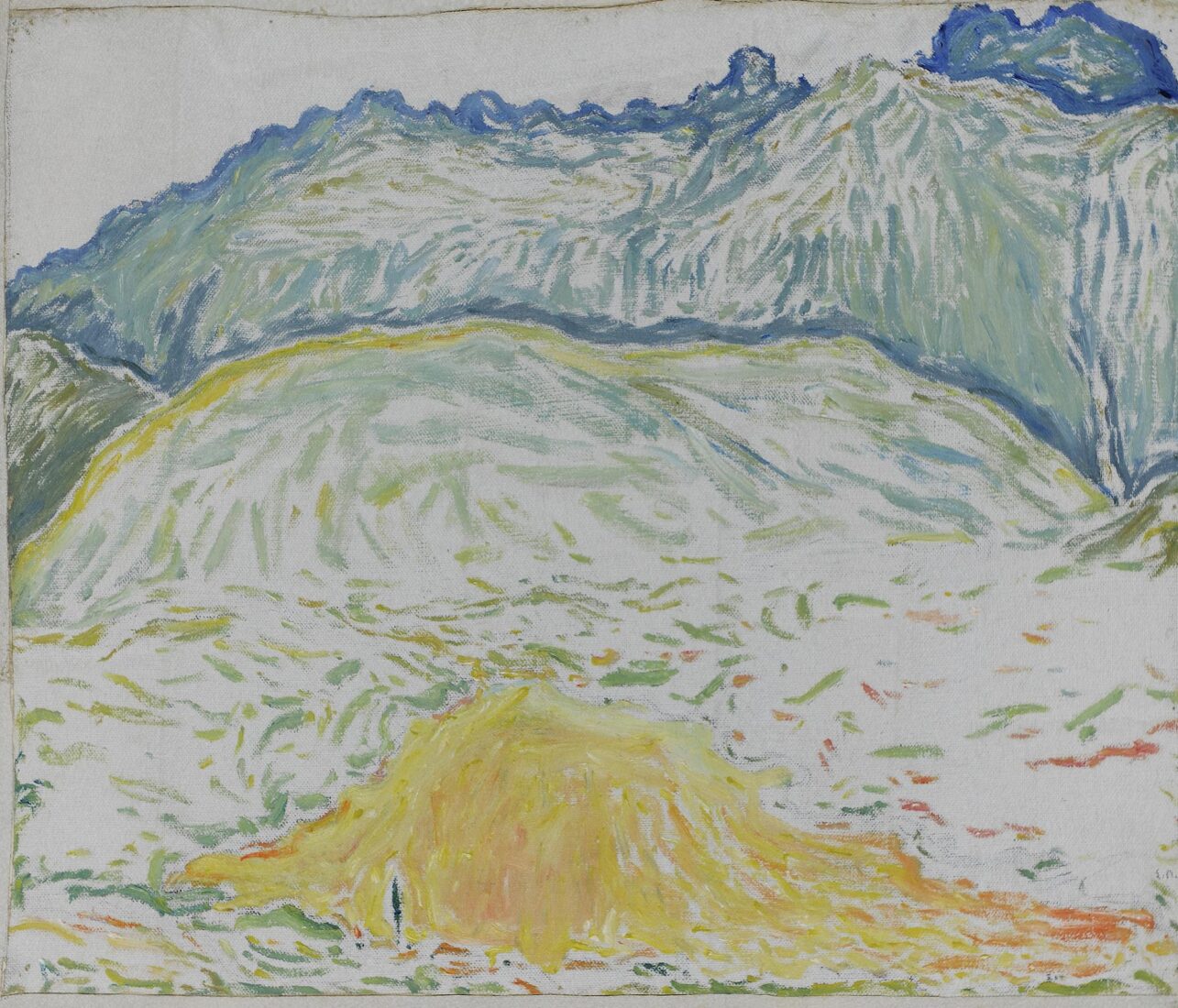
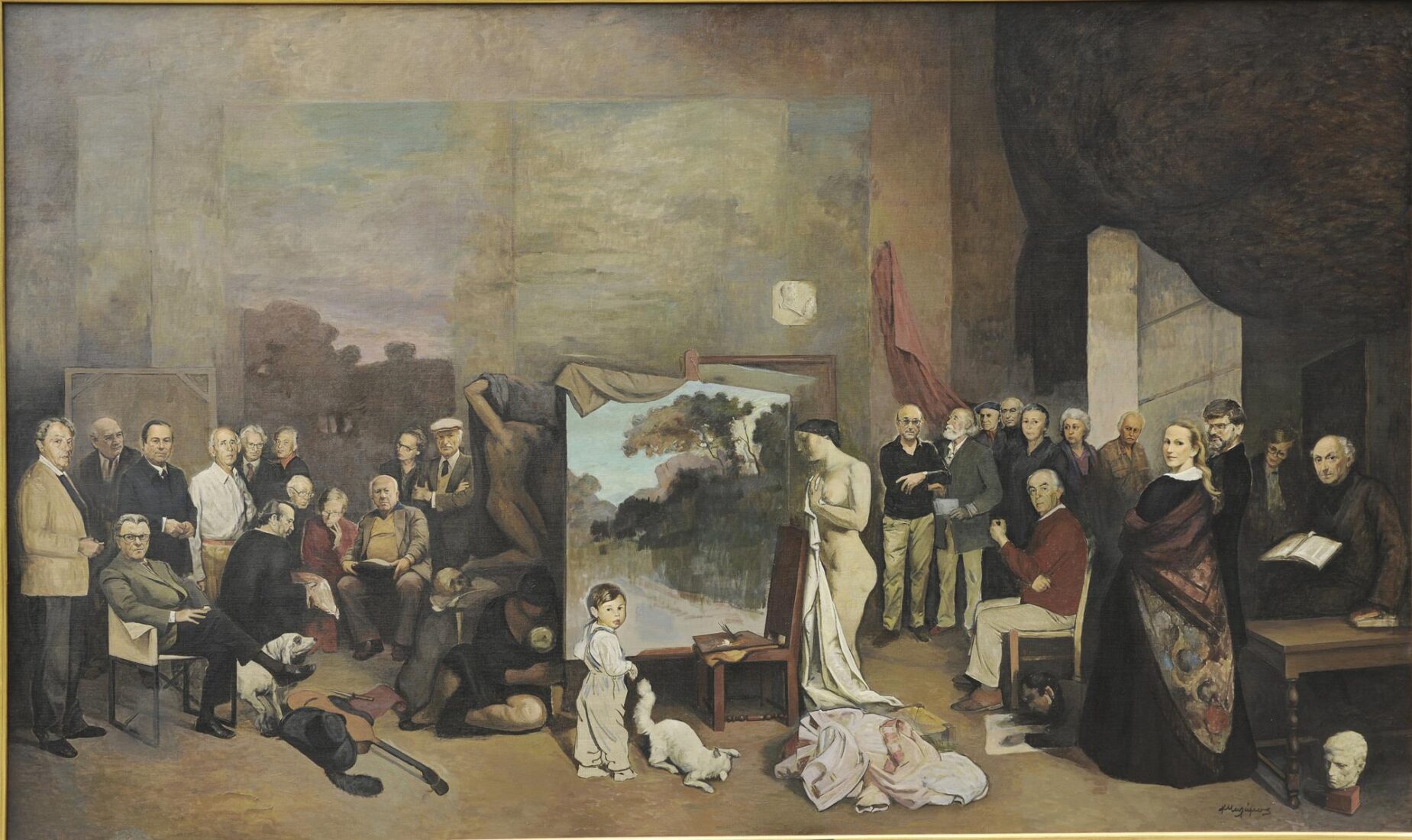
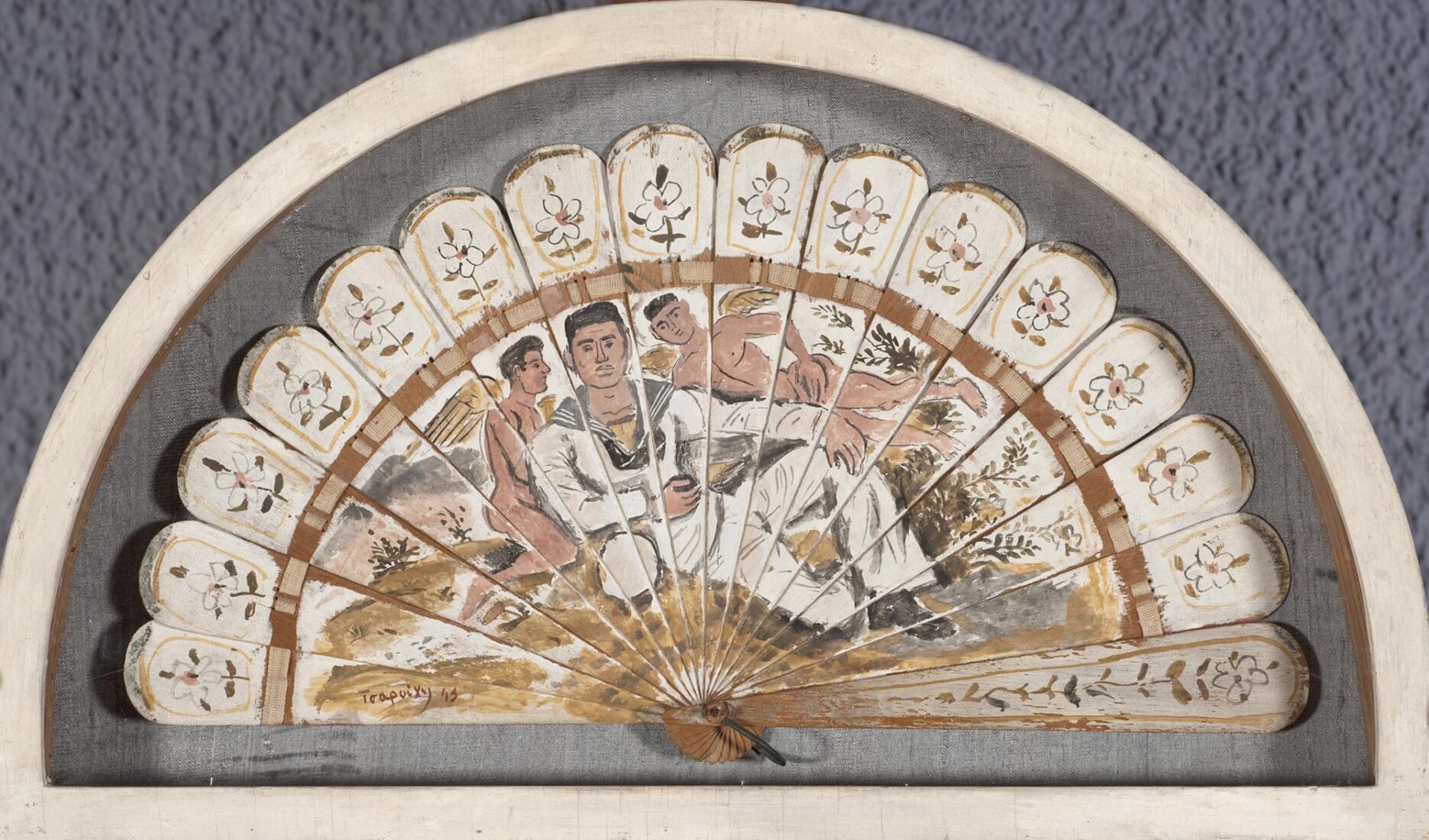
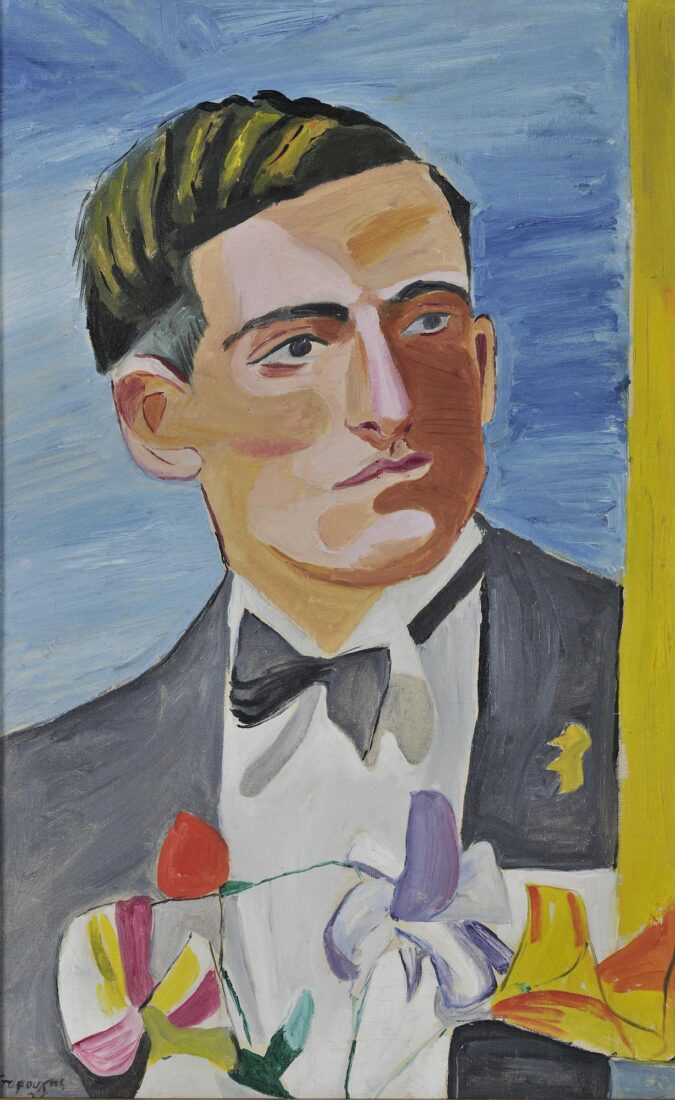
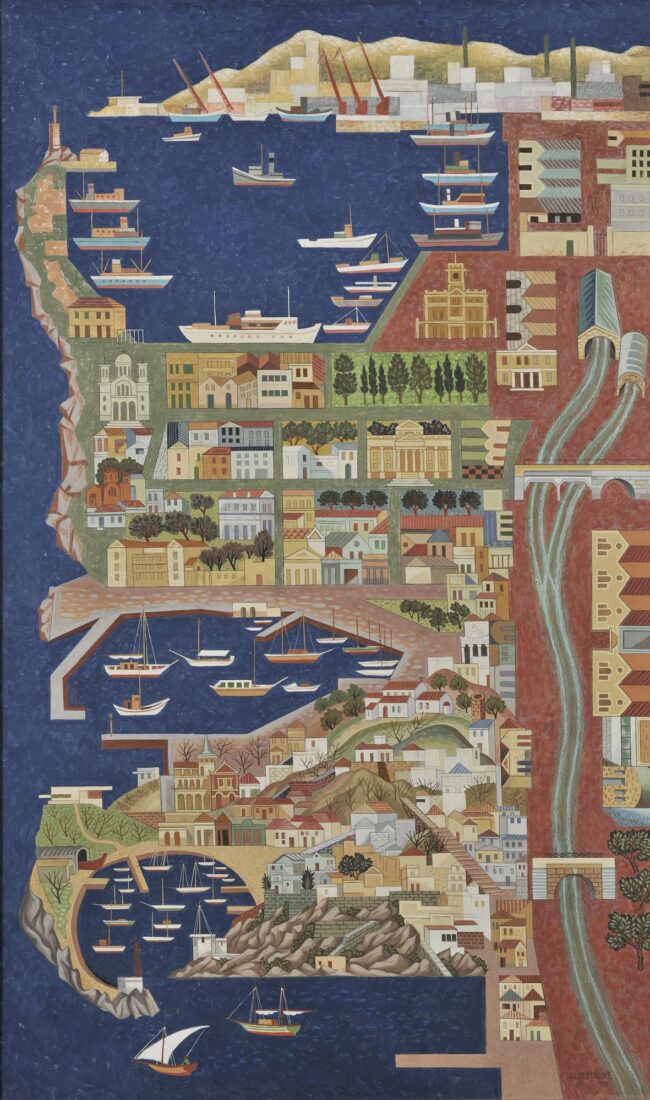
Aginor Asteriadis was a descendent of what is known as the Thirties Generation in Greek art. These particular artists espoused the ideological stand that the creation of an authentic Greek art form required a combination the lessons of tradition with the teachings of modern art. In the case of Asteriadis, tradition meant Byzantine art, which he’d studied as a hagiographer, as well as folk painting, on which he’d written several books.
His monumental composition, Piraeus, is highly typical of his practice and influenced by decorative folk art. The cartographical organization of the space does away with perspective and the third dimension. The subject is depicted vertically with the three harbors of Piraeus in ascending sequence from Mikrolimano and Zea to the main commercial port of Piraeus. All the compositional elements are stylized to the point that they become ornaments. The dark blue sea has a lively dialogue with the ochre tones of the earth, whereas the white houses add a joyful note to the composition, which is characterized by a strong melodic rhythm.
Similar compositions and chromatic arrangements are encountered in the Illustration of the Battle of Makrygianni by Panagiotis and Dimitrios Zografou.
